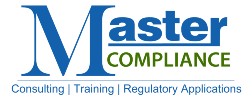Every broker dealer has at least one thing in common – Minimum Net Capital Requirements (“MNCR”). Whether the firm has a $5,000 MNCR or a $100,000 MNCR, the firm’s FINOP must ensure that the broker dealer is at all times (including intra-day) meeting the requirements set forth by FINRA with SEA Rule 15c3-1. The minimum net capital requirement is going to be the higher of the figure set forth by FINRA based upon the type of broker dealer the firm is OR the total of the firm’s Aggregate Indebtedness.
Today, let’s specifically talk about the Aggregate Indebtedness to Net Capital ratio. Your FINOP has a duty to make sure that the broker dealer is within the Aggregate Indebtedness to Net Capital ratio at all times as mentioned above. The FINOP should pay extra close attention to this ratio if the firm runs low on excess net capital. This figure is extremely important because it can quickly put a broker dealer under net capital and possibly shut the firm down until a capital infusion is made to cover these expenses. By creating this rule, FINRA has put another layer of protection in place for the clients.
What exactly is the Aggregate Indebtedness to Net Capital ratio? Aggregate Indebtedness is the sum of the broker dealer’s liabilities that are on the Balance Sheet. These liabilities can be unsecured or secured by assets not belonging to the broker dealer. As it relates to Net Capital, Aggregate Indebtedness cannot be more than 800% for a first-year broker dealer or 1500% for established broker dealers (in broker dealer in business for more than one year). Below are a couple of examples of the Aggregate Indebtedness to Net Capital Ratio.
Example 1: ABC Securities is a first-year broker dealer with a minimum net capital requirement of $5,000. The firm has total liabilities of $100,000 on the Balance Sheet. What is the firm’s MNCR?
Solution: $100,000 divided by 800% = $12,500 MNCR. The broker dealer falls into early warning at $12,500 multiplied by 120% which is 15,000. This is a $10,000 variance for the firm and may pose problems if the broker dealer does not have much cash on hand. If the firm cannot meet this increased minimum net capital requirement, a deficiency must be reported to FINRA.
Example 2: ABC Securities is an established broker dealer with a minimum net capital requirement of $5,000. The firm has total liabilities of $50,000 on the Balance Sheet. What is the firm’s MNCR?
Solution: $50,000 divided by 1500% = $3,333. Because this number is less than the standard MNCR of $5,000, the minimum net capital requirement defaults to $5,000 ($6,000 early warning).
These two examples show the importance of maintaining proper net capital within your broker dealer. Be sure that your FINOP is always focused on your firm’s net capital situation! For more information regarding net capital, FINOP, or compliance consulting, please contact Master Compliance/Securities Compliance Management here. Securities Compliance Management will be happy to walk through all the programs that are offered to help your broker dealer grow and be most successful.

